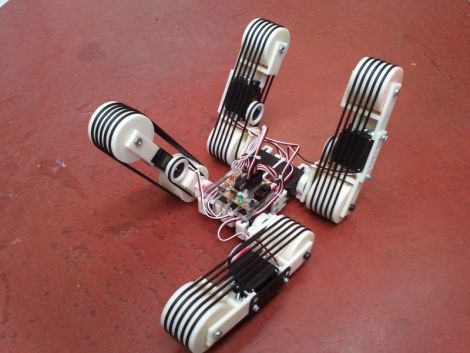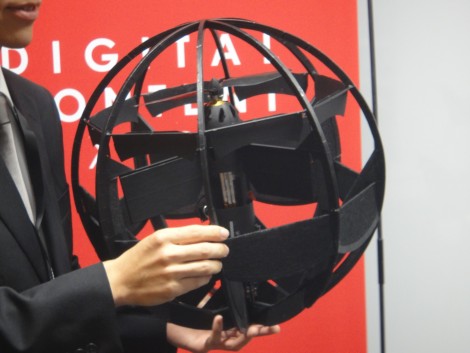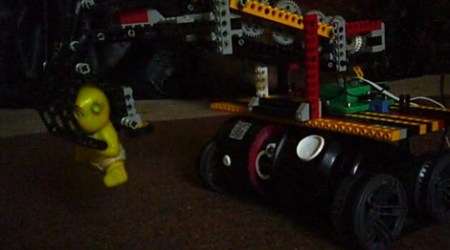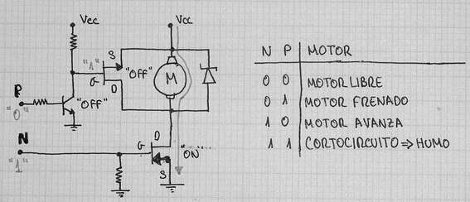
[Jon] has been developing a slick little RC robot in bits and pieces over the last year or so, which can constructed by anyone with access to a 3D printer. Servos and electronics aside, the entire thing can be put together in short order using the plans he posted on Thingiverse.
The robot makes use of four “caterpillar” type bots, which are all connected via a central frame. Once [Jon] had the general design for a single caterpillar bot down, he moved forward to create the robot you see above. His friend [Julián] lent a hand in the form of electronics and code, which allows the robot to be driven using a standard USB gamepad.
As you can see in the video below, the robot gets around nicely, climbing over obstacles with relative ease. While it is a bit loud, [Jon] says that’s due to the undersized servos they happen to be using at the moment. We think it looks great so far, but [Jon] already has plans to beef up the motors and add wireless control in the near future – we can’t wait to see it then!

















